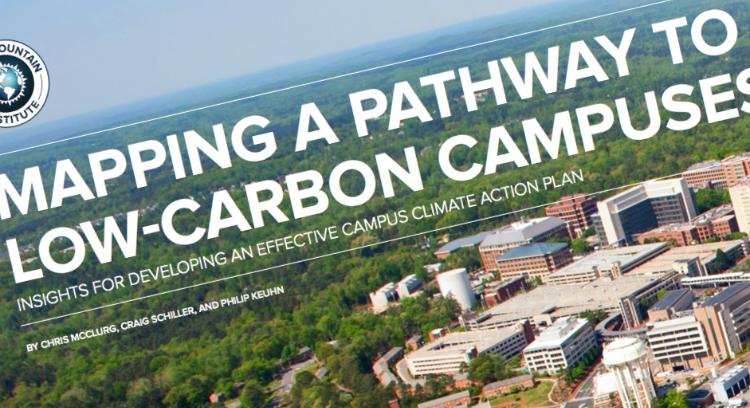Campuses are a focus of efforts to encourage regenerative design and construction for a couple of basic reasons: They’re planned and managed communities that can exercise real control over the quality of their building stock. And those communities tend to be sensitive to the longterm impact of decisions made today on the world that their students will inhabit.
If you’re involved in campus planning, you may want to check out a recent Rocky Mountain Institute guide on reducing the carbon output at universities and colleges.
Colorado-based RMI is peddling the free document — Mapping a Pathway to Low-Carbon Campuses — on the heels of 8th annual Association for the Advancement of Sustainability in Higher Education conference.
The institute’s takeaway from that AASHE meeting found a dark lining in a silver cloud:
It’s promising that so many colleges and universities have set aggressive sustainability goals. However, only a small percentage of campuses are actually reporting progress toward those goals. And many of those have implemented only incremental energy efficiency and renewable energy steps. Very few campuses have enacted transformational change to ensure long-term success.
The guide breaks carbon-cutting efforts into manageable “action items” and check lists, provides relevant case studies, and offers practical wide-ranging tips. Among the those tips were the following:
- People how-tos: Assemble a highly effective team, actively cultivate internal support, invest in resources to meet the campus’s evolving needs, and structure meetings to promote innovation.
- Policy how-tos: Define the investment decision-making process and standardize and strengthen contracts.
- Planning how-tos: Develop baselines, consider renewable energy technologies and contracts, plan and implement portfolio-wide projects, increase the speed and accuracy of plan development, reduce loads to reduce equipment capacity, and capitalize on the incremental costs from planned maintenance and renovations.
Many of the case studies involve less-than-dramatic nuts and bolts. For example, in North Carolina, a community college and the state university system agreed on a program for the community college to train building-maintenance personnel as “Supertechs” who then apprentice at one of the universities.
Download the report here.


